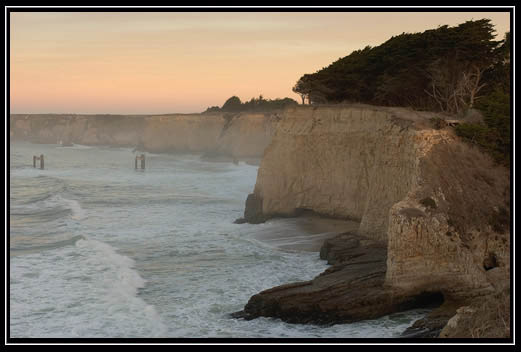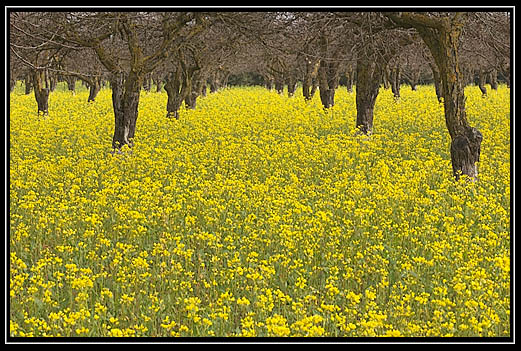|
|
|
|
|
|
|
Digital Outback Fine Art Photography
Handbook
© by Bettina & Uwe Steinmueller
|
|
|
|
|
|
6 The Challenge to capture nature
|
|
|
|
|
6.1 The light
6.2 Managing the dynamic range
6.3 Capture the essence
6.4 Sharp is not always better
6.5 The need for Detail
6.6 The need for speed
6.7 Flash
|
|
|
|
|
|
|
| 6.1 The light
|
|
|

Davenport in Morning Light |
|
|
|
Cameras actually don't capture objects they capture light. This light
is reflected from the objects we photograph. In nature (as opposed to
a studio) light is always different and the quality of this light makes
a big difference for all photos.
The light in the morning and late evening seems to have the best quality
for most photographers (and it is probably right). But if you travel
this means that you get up early (long before sunrise) sleep the day
and get out again late in the evening. This lets you long for winter
time if you (like we) do not love to get out that early.
There is a lot of literature out there which describes the different
qualities of light during the day. We have to admit that we have still
to learn a lot on this subject.
|
|
|
|
|
|
|
| 6.2 Managing the
dynamic range
|
|
|
|
An other reason for photographing in the morning and later in the evening
is the high contrast at sunny days. OK, you might not have that many
sunny days like we in California. But believe us for photography overcast
days are often so much better than the brutal California sun. It feels
wonderful for the body but not for the camera.
Most digital SLRs behave like chrome film and have to be exposed accordingly.
We avoid blown out highlights nearly at any cost which can drive us
at high contrast scenes easily into strong underexposure for the rest
of the image. Best is to avoid the contrasty scenes as much as possible.
Using gradient neutral filters can be a great solution for dealing
with high contrast. There are Photoshop filters available which do the
same thing in the digital darkroom. But again what you did not capture
at the time of the exposure cannot be recreated later in your lab. It
can be faked but this is still not the real thing.
|
|
|
|
|
|
|
| 6.3 Capture the essence
|
|
|
|
It does no make sense to photograph a scene as it just presents to
you. How could you ever portrait a huge mountain on a small or even
large print. You either capture it in a special light, weather or concentrate
on details which are easily overseen by others.
Many photographers love wide angle photos (the wider the better). But
think how difficult it is to fill this wide scene with pleasant and
meaningful content. Please do not misunderstand us, there are great
photographs using extreme wide angle lenses. Not because the photographer
used such a lens but because he managed to show great content in this
scene.
|
|
|
| · Close-ups · Show the not so obvious ·
Abstract · Capture behavior · Tell a story
|
|
|
|
|
|
|
|
|
| 6.4 Sharp is not
always better
|
|
|
|
Some people only judge an image by detail and sharpness. Both criteria
can be important for some images but are rarely the main criteria for
us.
We think composition, color and the story of an image are more important.
This is not an excuse for poor technique and focussing but instead for
looking at the content first. If lack of sharpness and missing detail
are in your way to appreciate the photo then there is something wrong.
You probably also know these photographers who want to look at an 20x30"
image with a loupe. While this is clearly needed for producing the photograph
and ensure optimum print quality it does not say anything about the
visual quality of the photo itself. There are too many boring sharp
and detailed photos out there.
Let us repeat: This is no excuse for poor photographers technique or
defining an unacceptable blurred image as part of the artistic expression.
|
|
|
|
|
|
|
| 6.5 The need for
Detail
|
|
|

Orchard at Gilroy |
|
|
|
4x5" cameras (in the digital world using the BetterLight scanning
backs) can capture a lot more detail than 35mm SLRs. This means these
cameras are the choice for fine art photography whenever the details
and finest textures matter.
You might ask is this not always the case? We do not think so. In the
world of paintings the Impressionists abstracted from many details to
concentrate on the essence (from the perspective of the artist).
|
|
|
|
|
|
|
|
The two photos presented here should make the case. The orchard feels
more like those expressionist paintings while for the trees detail is
a quality of its own.
Also a lack of detail often limits the print size for the photo.
|
|
|
|
|
|
|
|
|
| 6.6 The need for
speed (ISO)
|
|
|
|
Unfortunately the better light in the morning and evening also limits
the amount of light available. If you then cannot photograph from a
tripod because the object is moving then you need to use higher ISO.
Most SLRs offer ISO 800-3200 by just changing an option. But be aware
that the image quality is below the one available a lower ISO settings.
We try to stay at lower ISO values most of the time (100-200) and rarely
go beyond ISO 400. We also use a rigid tripod whenever possible. Not
only to get sharper images but also for taking our time to compose and
select properly. The tripod also allows to avoid camera shake by the
mirror (most cameras have a mirror lockup feature).
|
|
|
|
|
|
|
|
|
| 6.7 Flash
|
|
|
|
There is nothing better than natural light. But there scenes where
you might need some fill flash to capture a high contrast scene. We
all know these obvious unnatural flash photos. The real challenge is
to use flash in a way that there is no obvious flash visible in the
final photo.
We rarely use flash but again only the final result counts. If you
have boring flat image or deep muddy shadows you image might miss some
flash.
|
|
|
|
|
| References
|
|
|
| Digital Outback Photo: "Flash
Techniques" by Neil Turner
|
| David Griffith: "More
Fun with Your Better Beamer" (using a popular flash extender)
|
|
|
|
|
|
|
| © by Bettina & Uwe Steinmueller
|
|
|
|
|
|
|
/
/
/
/